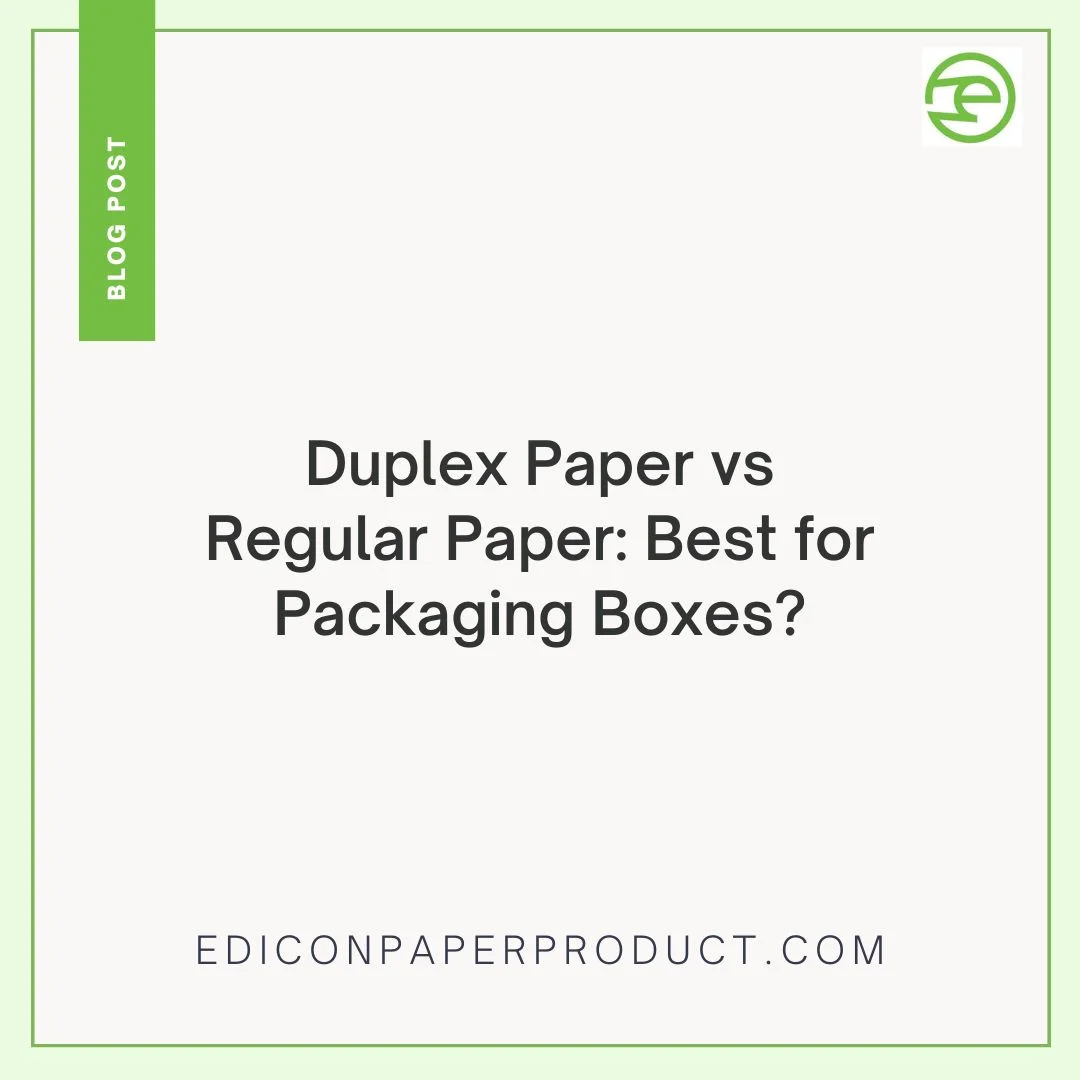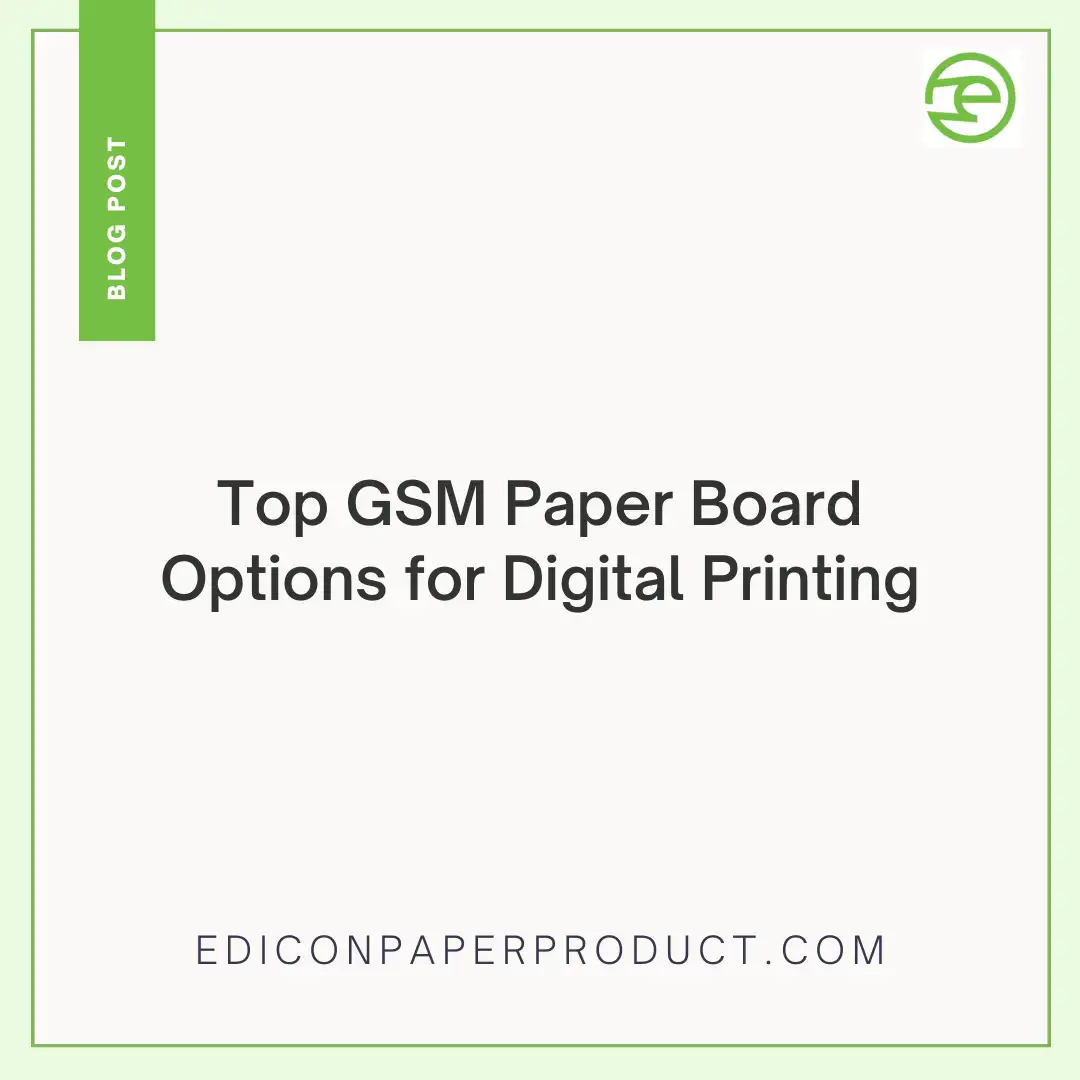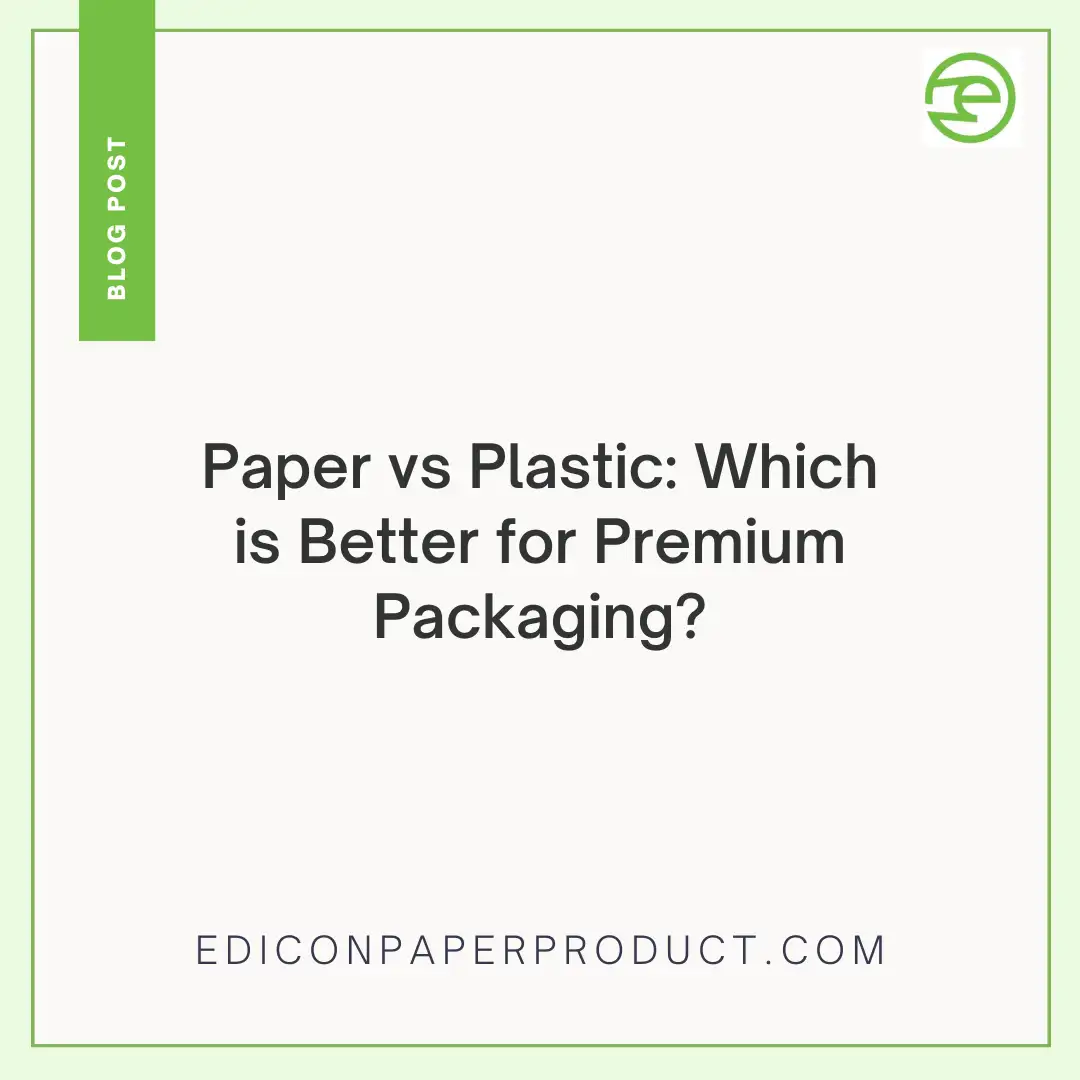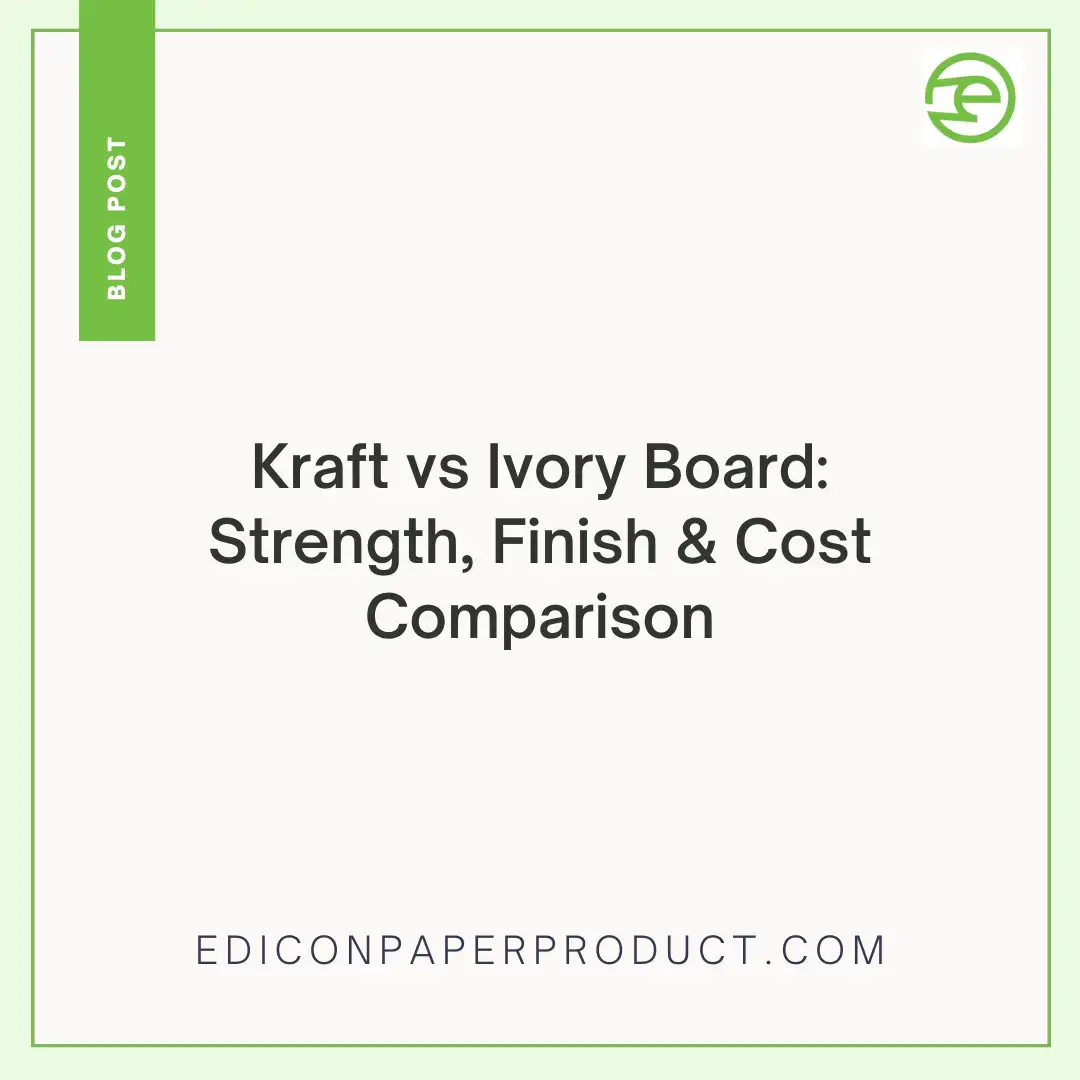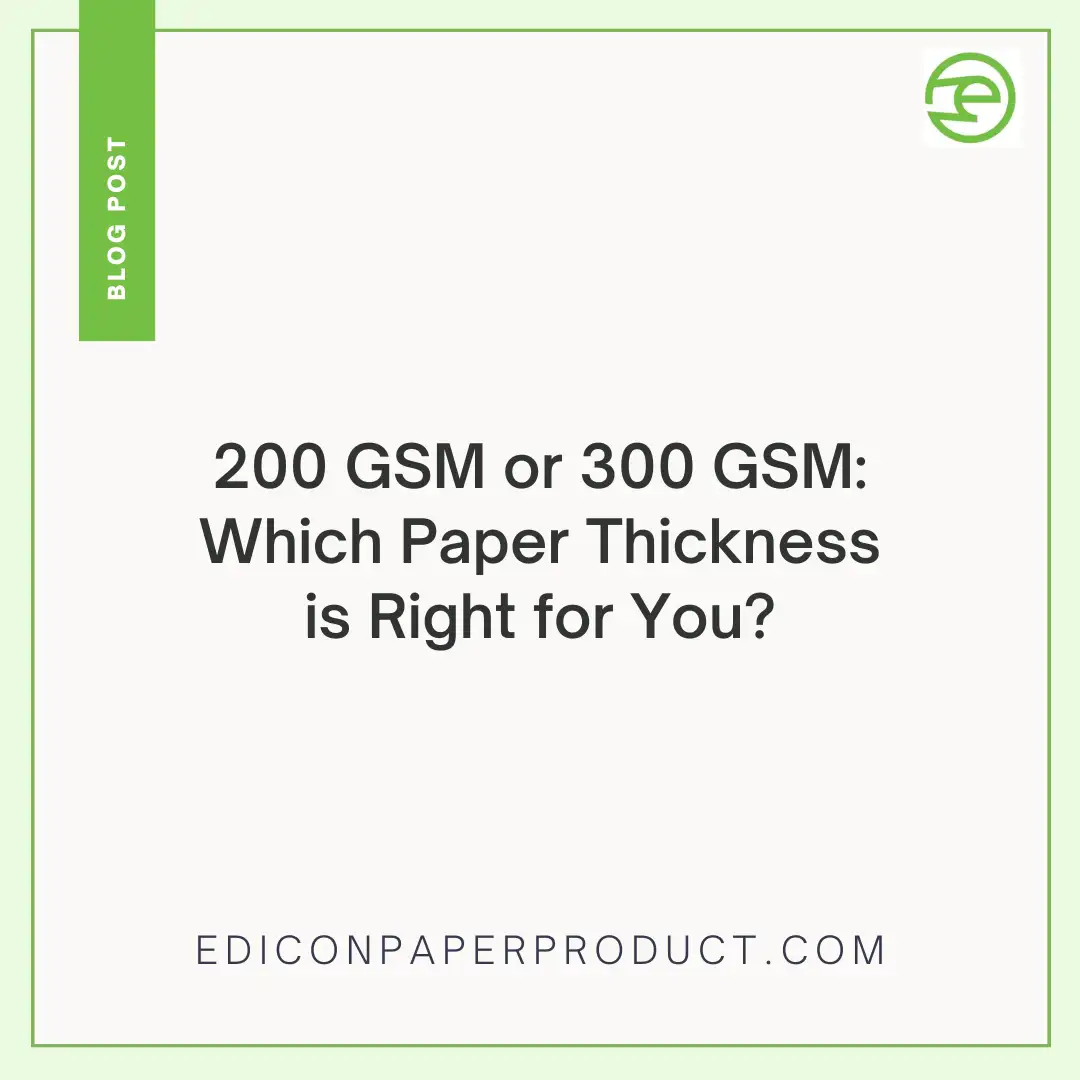Duplex Paper vs Regular Paper: Best for Packaging Boxes?
When it comes to choosing the right material for packaging boxes, the debate between duplex paper and regular paper is common among manufacturers, printers, and brand owners. The decision has a direct influence not only on how your packaging looks but on its strength, durability and affordability. This guide will help you know the differences and make decisions on what suits your packaging paper needs the most.
What is Duplex Paper?
Duplex paper: It is a multi-layered paper board prepared by gluing two layers of paper. Coating is usually applied to one side (typically the top) to make it smooth and printable, and of varying colours (typically grey, e.g., grey back duplex board or white, e.g., white back duplex board) to the other. It is mostly employed in boxing, carton and custom packaging boxes for retail product presentation.
![]()
Duplex paper price is often more economical compared to other rigid boards, making it a smart choice for brands with large-scale packaging needs.
Key Features of Duplex Paper:
• High Strength and Thickness – Available in various GSM (grams per square meter) like 180 GSM paper, 250 GSM paper, and 300 GSM paper, providing rigidity and protection. Ideal even for large packing boxes.
• Excellent Print Surface – The coated side allows sharp, vibrant offset printing.
• Cost-Effective – Cheaper than specialty boards like solid bleached sulfate (SBS) or 300 gsm cardstock, yet it offers good strength for packaging.
• Eco-Friendly Options – Often made from recycled content and FSC-certified sources. Duplex paper is also used in eco-conscious food packaging applications.
What is Regular Paper?
Regular paper refers to standard paper types used for general printing, such as office paper (70–100 GSM), brochures (120–170 GSM), or poster papers. It is less rigid and flexible in nature and not of heavy performance or structural use, such as packaging.
![]()
Regular-sized paper and regular white paper are commonly found in offices, schools, and printing presses where flexibility, not strength, is required.
Key Features of Regular Paper:
• Lightweight & Flexible – Suitable for printing flyers, booklets, labels.
• Low GSM Range – Typically between 70–170 GSM.
• Not Ideal for Packaging – Lacks the strength and resistance needed for boxes or protective cartons.
• Affordable for Print Media – Best for office stationery, not for structural or protective needs.
Duplex Paper vs Regular Paper: A Quick Comparison
| Feature | Duplex Paper | Regular Paper |
| GSM Range | 180 GSM – 350 GSM (e.g., 300 GSM paper, 250 GSM paper) | 70 GSM – 170 GSM |
| Strength & Durability | High – suitable for packaging boxes, cartons | Low – prone to tearing, folding, and damage |
| Surface Finish | One coated side for superior printing (offset compatible) | Matte or smooth, not ideal for box printing |
| Applications | Packaging boxes, cartons, and display stands | Flyers, brochures, and office printing |
| Eco-Friendly Options | Yes – recycled and FSC-certified available | Yes, but mostly for disposable use |
| Cost | Slightly higher than regular paper, but affordable | Cheaper, but unsuitable for boxes |
Why Duplex Paper is Best for Packaging Boxes
• Strength for Protection: The thickness and rigidity of duplex boards offer the requisite protection of products on the road and shelf. Normal paper is not strong enough to hold heavy objects and delicate items, especially when used for large packing boxes, where structural support is crucial.
• Superior Printing Surface: The coated side of duplex paper provides excellent, clear printing, allowing boxes to appear better and attractive; hence, for branding and marketing purposes.
![]()
• Available in Different GSM Options: Duplex boards can be customized with different GSM papers, 180 GSM paper, 250 GSM paper, 300 GSM paper, or even 350 GSM paper, depending on the weight and fragility of the product.
• Sustainability Factor: Duplex paper is a more sustainable packaging choice because it comes in recycled grey back duplex board or eco-friendly white back duplex board.
When to Choose Regular Paper?
A regular paper is only suitable if your packaging involves:
• Inner wrapping sheets
• Paper inserts or manuals
• Temporary coverings or dust protectors
It is not recommended for outer boxes or protective cartons due to its lack of rigidity.
Common Mistakes to Avoid When Choosing Duplex Paper for Packaging
The choice of the desired duplex paper to use in the packaging might appear simple; however, most brands and manufacturers do commit errors and these errors could either cause high costs, performance failure of the packaging, or even customer dissatisfaction. These are some of the pitfalls to avoid here:
![]()
1. Choosing the Wrong GSM for Product Weight
Choosing the wrong GSM (grams per square meter) of the product according to its weight and requirements for handling some products can turn out to be one of the most common mistakes. As an example, 180 GSM paper would suit well with lightweight products, yet delicate products or heavy products should have 300 GSM paper or even 350 GSM paper to be well protected. Paper that is very light can be damaged in shipping and the GSM should not be completely unnecessary as it would add to the expenses.
2. Ignoring Coated vs. Uncoated Requirements
The duplex paper normally has one side coated, which helps in smooth printing. Some users end up using uncoated packaging that requires high-quality print finishing. To have crisp, vibrant prints, choose coated duplex boards particularly when it is being used in retail boxes or display cartons.
3. Confusing Grey Back with White Back Duplex Board
Numerous consumers cannot differentiate between a grey back duplex board and a white back duplex board. Use of grey back is cheaper and can be used in the inner or secondary packaging, but white back has higher V, hence can be used in FMCG products, cosmetic products or a high-end product because the inner side is also visible. The wrong type can have two consequences, both on appearance and branding.
4. Ignoring Post-Printing Processes
In case you need to use lamination, UV coating, embossing, or stamping the foil, the low-quality or incompatible duplex board might crack or peel off. It is important to always check that the duplex paper is agreeable with the finishing processes it is to go through.
Pro Tip: Partnering with trusted manufacturers like Edicon Paper ensures you get duplex and triplex boards that match your exact packaging, printing, and finishing needs, helping you avoid these common mistakes.
Premium Duplex and Triplex Board Solutions by Edicon Paper
Edicon Paper is a renowned manufacturer and supplier of high-quality duplex and triplex boards, offering tailored solutions to meet global packaging and printing demands. They have a large collection of grey back duplex boards, white back duplex boards within different GSM choices that are 120 GSM paper, 180 GSM paper, 250 GSM paper, 300 GSM paper, and 350 GSM paper. They are made up to have high printability, durability, and strength, hence suitable in offset printing, folding cartons and retail packaging among others.
Get Best Quality Packaging Material
One of the most appealing items in the product line of Edicon Paper is the exclusive Iconic Series with such high-quality boards as Iconic Ocean, Iconic Era, Iconic Crema, Iconic Velvet, and Iconic Kraft Back. All the variants are designed to accommodate different uses, such as the moisture resistance of Iconic Ocean, the velvet smoothness of Iconic Velvet, and the natural texture using Iconic Kraft Back in the development of eco-friendly packaging. Such niche products would enable Edicon Paper to guarantee businesses with versatile high performance boards that fit various packaging requirements.
Conclusion: Duplex Paper Wins for Packaging Boxes
Duplex paper seems to be the definite advantage over regular paper in the case of packing boxes. It has a big GSM range, good print quality and resistance, as well as being ideal in retail cartons, display boxes and shipping cartons. Conversely, the ordinary paper is not strong enough and well-structured to cope with packaging requirements.
In case you need high-quality, reliable duplex boards, the manufacturers of these, such as Edicon Paper, will provide you with a variety of materials, 180 GSM paper, 250 GSM, 300 GSM and 350 GSM paper to suit your requirements for the packaging boxes you manufacture or design.

